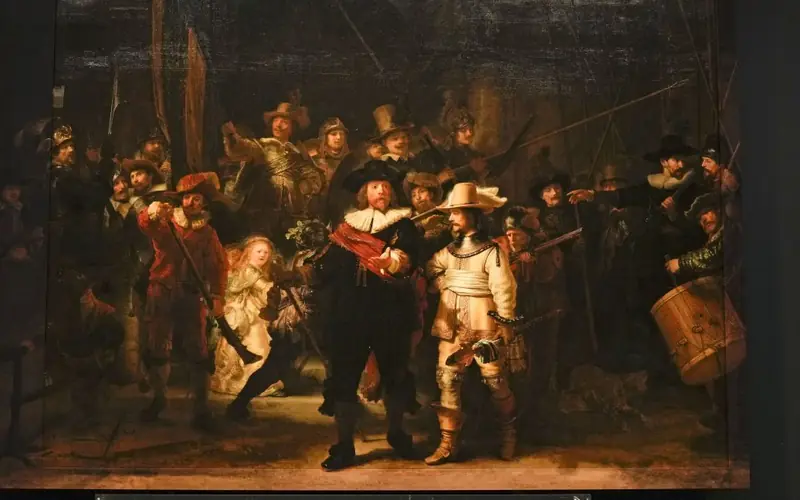
Thanks to advancements in cutting-edge technology, scientists now find it easier to hunt for unexpected surprises in the chemical composition of “The Night Watch” (1642).
Recently, a team of researchers from scientific centers across Europe discovered an unexpected compound—lead formate—while studying the layers of paint on the canvas.
Shifting Molecules
The presence of lead formate molecules on this masterpiece from the Dutch Golden Age astonished scientists.
The researchers working on the project to analyze the chemistry of “The Night Watch” took the tiniest samples of paint and examined them using new analytical methods, including synchrotron X-ray probing at the European Synchrotron Radiation Facility (ESRF) in France.
As a result, the team identified the presence of lead formate (II), Pb(HCOO)₂. They also “mapped the presence of formates on a micrometer scale and traced their formation over time,” noted Marin Kott from ESRF.
This compound had never been found in ancient paintings before; it was rarely present in modern canvases, according to Science Alert.
This phenomenon may not have been observed previously because lead formate quickly disappears from the painting. This is the belief of Victor Gonzalez, a team member and photochemist at the French National Centre for Scientific Research.

Few Theories So Far
Rembrandt was known for his explorations of painting materials, various techniques, and compositions. This recent discovery underscores that fact once again. As aptly noted by Rijksmuseum director Taco Dibbits, Rembrandt never did what was expected of him.
The researchers suggested that the artist used a mixture of lead oxide and warm linseed oil to create the light paint. As a result of this paint reacting with other molecules, lead formate was subsequently formed. The scientists even attempted to replicate the likely chemical experiment in the lab. However, the team does not rule out the possibility that the compound could have arisen from restoration work. The findings, which provide new insights into Rembrandt’s artistic methods, were published in Angewandte Chemie International Edition.
What You Should Know About This Painting
The canvas “The Night Watch” is housed in the Rijksmuseum in Amsterdam, Netherlands.
Measuring 3.63 meters in height and 4.37 meters in width, it is Rembrandt’s largest painting (1606–1669) and one of the museum’s largest artworks.
The full title of this legendary piece is “The Night Watch of Captain Frans Banning Cocq and Lieutenant Willem van Ruytenburgh.” Despite its name, it depicts a daytime scene that has darkened over the years.
Rembrandt created this canvas on commission from the militia company it portrays, for which the masterpiece is named. The artist was paid 1,600 florins for the painting.
The work is considered revolutionary because the artist depicted the militia in motion, whereas characters in such collective portraits during Rembrandt’s time were typically static. Additionally, the artist filled the scene not only with militia members but also with 16 bystanders. For centuries, humanity has sought to answer the question: what purpose do they serve?
In 1715, the canvas was trimmed on all sides to fit into a new space: the Small Hall of the Military Council in the Amsterdam Town Hall. As a result of this careless treatment, two militia members were lost from the composition.
The master’s work has endured numerous trials. During World War II, the painting was hidden in bomb shelters from Nazi occupiers, rolled up in a tube.
Vandals have attacked “The Night Watch” at least three times. Once, a piece was cut from it. Another time, it was stabbed with a knife. A third time, it was splashed with sulfuric acid, but fortunately, the canvas survived—the only damage was to the layer of varnish.
In 2021, experts used artificial intelligence to recreate the likely original appearance of “The Night Watch.” They utilized a copy of the canvas made in the 17th century by Gerrit Lundens, as well as X-ray images of the underlying paint layers beneath the darkened image. The AI version is also on display at the Rijksmuseum.

